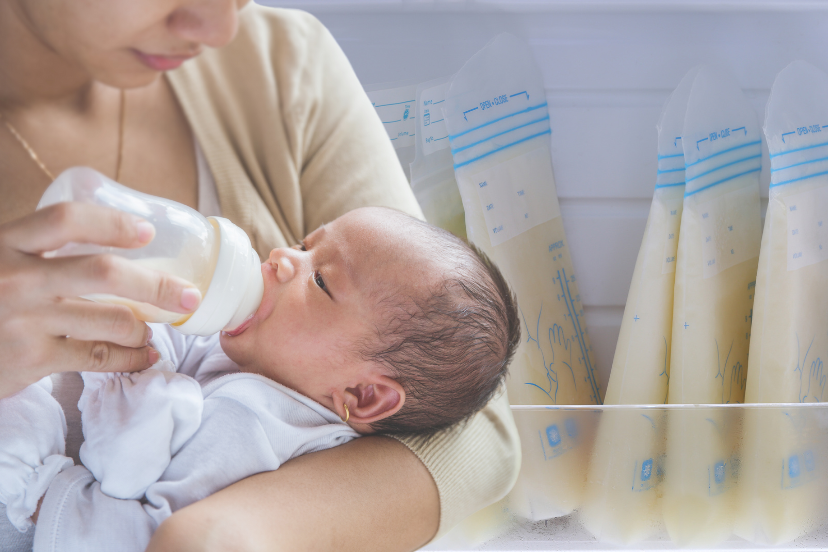Freezing Breast Milk: An In-Depth Guide for New Moms
Are you a new mom wondering about the best way to preserve your precious breast milk? Look no further! In this detailed guide, we’ll walk you through the ins and outs of freezing breast milk, ensuring that your little one gets the best nutrition even when you’re not around. From the how-tos to the FAQs, we’ve got you covered.
Understanding the Basics of Freezing Breast Milk
Before we dive into the nitty-gritty, let’s understand the fundamentals of freezing breast milk. It’s essential to know the right techniques to maintain the nutrients and quality of the milk for your baby’s well-being.
Freezing Breast Milk: A Brief Overview When you choose to freeze breast milk, you’re essentially putting a pause on the natural processes that can cause the milk to spoil or lose its nutritional value. By freezing it at the right time and temperature, you can ensure that your baby receives all the goodness even when you’re not there.
Why Freeze Breast Milk? There are various reasons why a mother might choose to freeze her breast milk. It could be for storing a surplus supply, preparing for return to work, or even for emergencies. Freezing allows flexibility in feeding your baby without compromising on the nutritional benefits.
When Should You Start Freezing Breast Milk? Ideally, you can start freezing breast milk as soon as your milk supply is well-established and your baby has a good breastfeeding routine. Usually, this is around 3-4 weeks after birth.
How to Properly Freeze Breast Milk
Now that you understand the importance of freezing breast milk, let’s move on to the step-by-step process to ensure you do it right.
Step 1: Gather the Right Supplies Before you start freezing breast milk, make sure you have the necessary supplies: clean bottles or storage bags, labels, and a reliable breast pump.
Step 2: Choose the Right Containers Invest in BPA-free storage containers or breast milk storage bags. These should be specifically designed for storing breast milk, ensuring safety and quality.
Step 3: Label and Date the Containers Always label each container with the date of expression. This way, you can use the oldest milk first, maintaining the milk’s freshness.
Step 4: Fill Containers Carefully Fill the containers or bags with the appropriate amount of milk your baby typically consumes in one feeding. Avoid overfilling to allow space for expansion during freezing.
Step 5: Store in the Freezer Place the filled containers or bags in the coldest part of your freezer, away from the door. Ensure the temperature is consistent and set to 0°F (-18°C) or lower.
Step 6: Thawing Breast Milk When it’s time to use the frozen breast milk, thaw it in the refrigerator or a bowl of warm water. Never use a microwave to thaw breast milk, as it can destroy essential nutrients and create hot spots.
Step 7: Check for Quality Always check the breast milk for any unusual odor or appearance. If it smells sour or has a strange taste, it’s best not to use it.
FAQs About Freezing Breast Milk
Let’s address some common questions new moms often have about freezing breast milk.
Is it safe to freeze breast milk?
Yes, freezing moms milk is safe and recommended. It preserves the nutritional value and allows you to store milk for future feedings.
How long can you freeze breast milk?
Breast milk can be safely frozen for up to six months in a standard freezer and up to twelve months in a deep freeze.
Can I mix freshly expressed milk with frozen milk?
Yes, you can mix freshly expressed milk with frozen milk, but ensure the freshly expressed milk is chilled in the refrigerator before combining.
Can I refreeze breast milk that has been thawed?
It’s not recommended to refreeze breast milk once it has been thawed. Use it within 24 hours after thawing.
Can you freeze breast milk in glass containers?
Yes, you can freeze breast milk in glass containers designed for freezing, leaving enough room for expansion.
Can I freeze breast milk with a little formula or water?
It’s not advisable to dilute breast milk with water or formula before freezing. Breast milk is nutritionally complete and doesn’t require dilution.
In Conclusion
Freezing breast milk is a wonderful way to ensure your baby receives the best nutrition even when you’re not available to breastfeed. By following proper techniques and guidelines, you can store your breast milk efficiently and safely. Remember to always prioritize your baby’s health and consult a healthcare professional for any specific concerns regarding breastfeeding and breast milk storage. Happy parenting!




